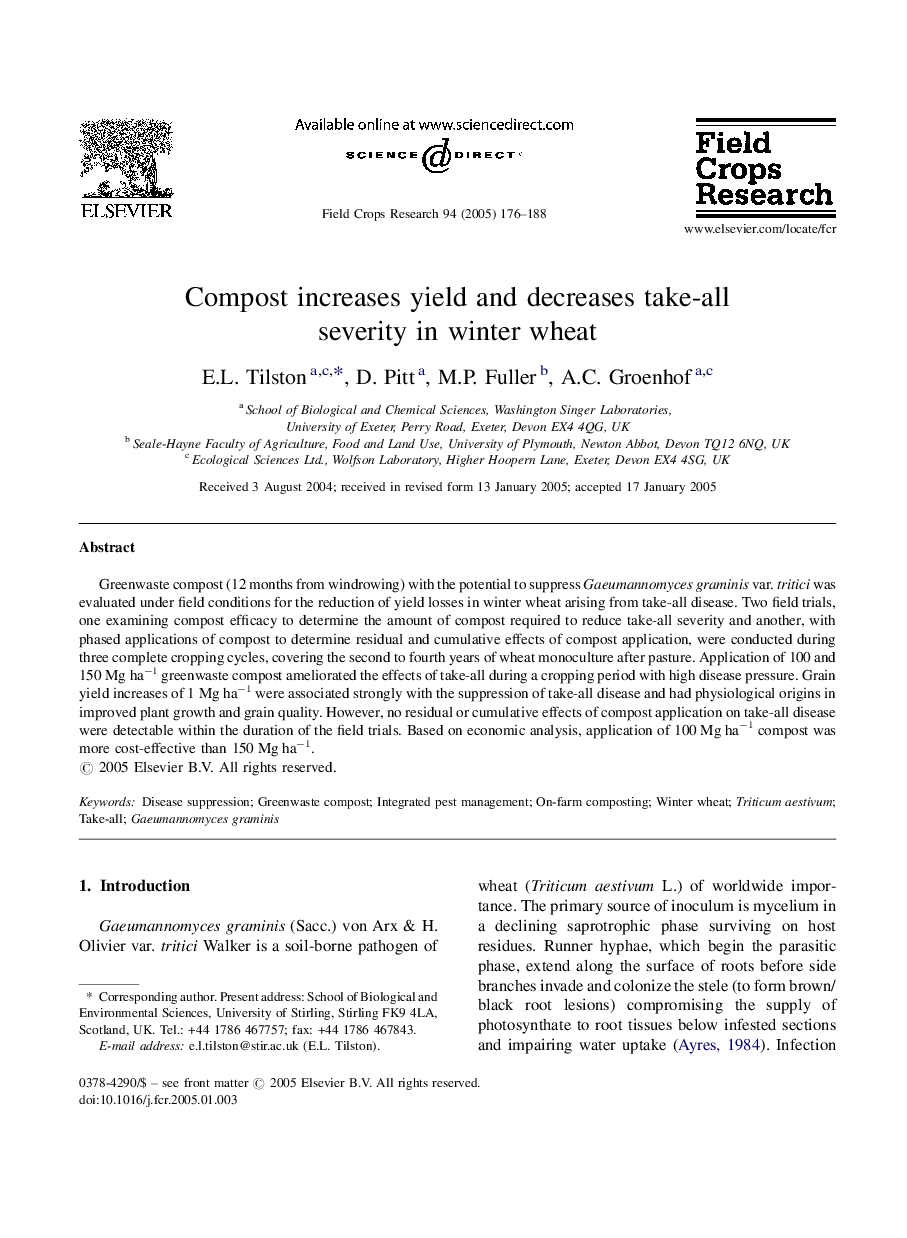| Article ID | Journal | Published Year | Pages | File Type |
|---|---|---|---|---|
| 9473508 | Field Crops Research | 2005 | 13 Pages |
Abstract
Greenwaste compost (12 months from windrowing) with the potential to suppress Gaeumannomyces graminis var. tritici was evaluated under field conditions for the reduction of yield losses in winter wheat arising from take-all disease. Two field trials, one examining compost efficacy to determine the amount of compost required to reduce take-all severity and another, with phased applications of compost to determine residual and cumulative effects of compost application, were conducted during three complete cropping cycles, covering the second to fourth years of wheat monoculture after pasture. Application of 100 and 150 Mg haâ1 greenwaste compost ameliorated the effects of take-all during a cropping period with high disease pressure. Grain yield increases of 1 Mg haâ1 were associated strongly with the suppression of take-all disease and had physiological origins in improved plant growth and grain quality. However, no residual or cumulative effects of compost application on take-all disease were detectable within the duration of the field trials. Based on economic analysis, application of 100 Mg haâ1 compost was more cost-effective than 150 Mg haâ1.
Keywords
Related Topics
Life Sciences
Agricultural and Biological Sciences
Agronomy and Crop Science
Authors
E.L. Tilston, D. Pitt, M.P. Fuller, A.C. Groenhof,
